Listen Now
On our first episode of Under the Ginkgo Tree, Sam King speaks with us about his alarm at the gravity of our eco-crisis as well as his commitment to working for a more just and sustainable future. He speaks of the wisdom that he finds in the 13.8-billion-year story of the universe, as well as his efforts to invite others into this story. Throughout our conversation, we sense Sam’s capacity for holding together an awareness of the vastness of the universe with a deep attunement to that which is particular, local, and immediately present.
In each episode, co-hosts Jim Robinson and Liam Myers facilitate reflection on our place in the wider web of life through conversations with guest speakers, embodied spiritual practices, and by identifying a particular plant on campus. Join us, Under the Ginkgo Tree!
About the Guest
Sam King is Director of Sustainability for the U.S. Marist school network and Project Manager for Journey of the Universe. A Yale Divinity graduate, he bridges science and eco-spiritual wisdom, inviting others into the 13.8-billion-year story of the cosmos.
Links and Resources
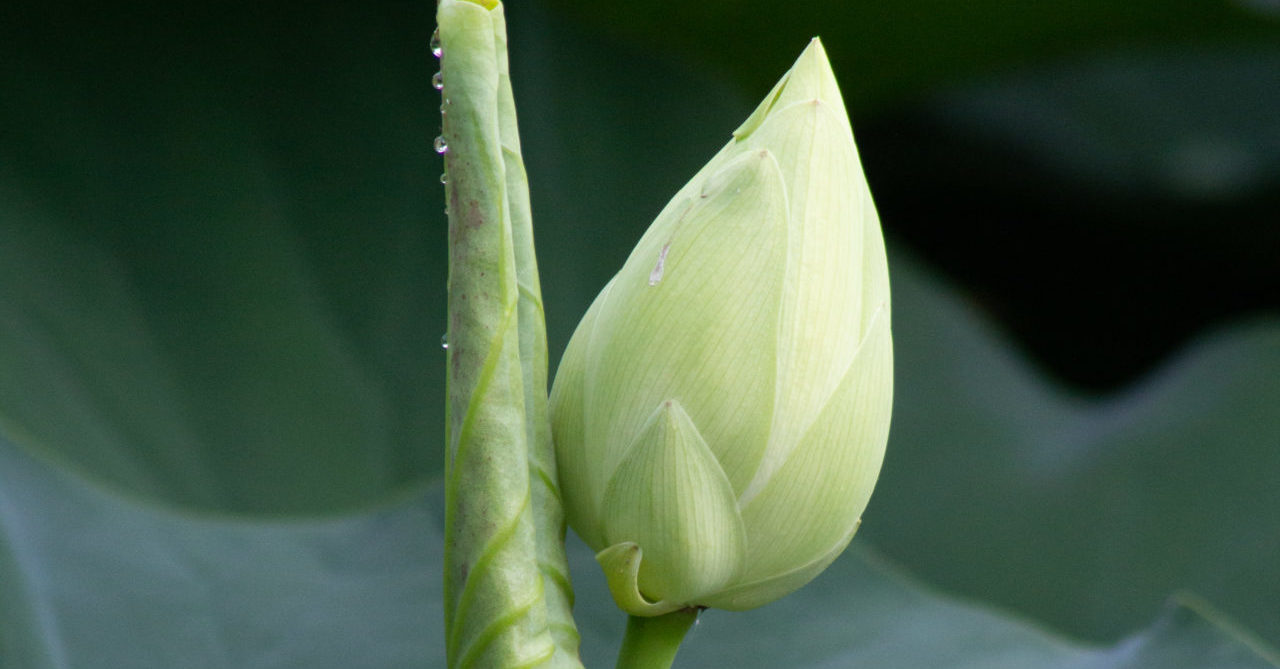
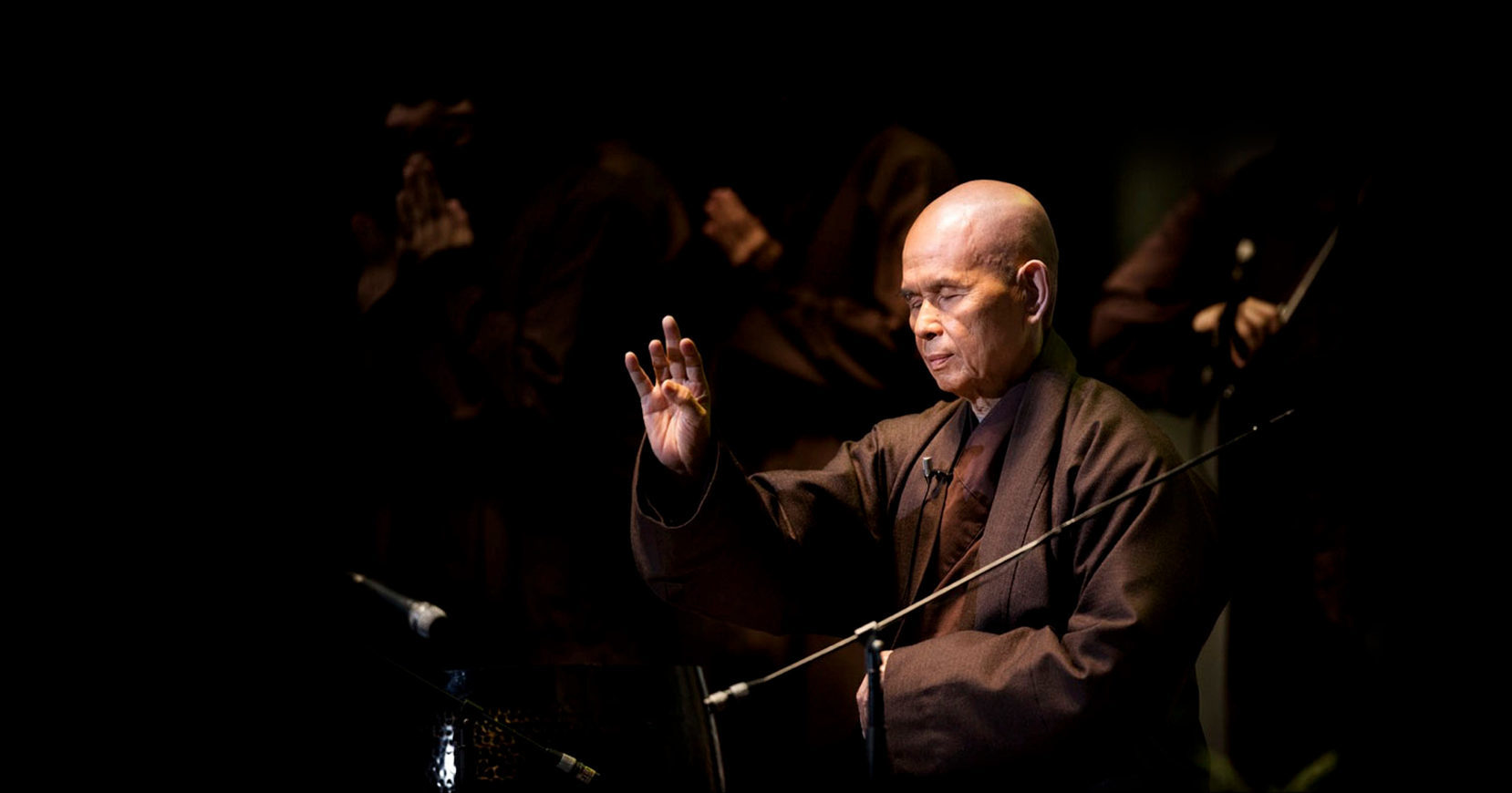
Transcript
[00:00:00] Introduction
[00:00:00] Liam Myers: hello and welcome to Under the Ginkgo Tree, a project of the Deignan Institute for Earth and Spirit at Iona University. I'm Liam Myers and I'm here with Jim Robinson and together we invite you into a journey in which we will together seek greater connection to our common home. On this first episode, Jim and I are delighted to introduce you to this project through an interview with Sam King, which you'll get to hear.
We will share with you a naming ritual, which will continue on each episode of this podcast. We'll invite you into an embodied experience through mindfulness today. And we'll begin all of this with a land acknowledgement. Iona University acknowledges that indigenous peoples and nations Including the Munsee Lenape people within the Greater Lenapehoking Territory have stewarded through generations the lands and waterways of what is now Westchester County, where Iona University is located.
We honor and respect the enduring relationship that exists between these peoples and nations in this land. In the tradition of the Christian Brothers, Iona University uses education as a force for overcoming injustice and marginalization by promoting honor, dignity, and respect for all people. This is the Land Acknowledgement Statement from Iona University, and we seek to begin with this statement in order to honor the land, honor the indigenous peoples of this land at the start, at the onset of this project.
And we also know that acknowledging the land, only acknowledging the land is not enough, but that it is a start. We know that we have to move forward towards reparation and towards justice. And so in each episode of this podcast, we will have some element of naming, naming a place of significance within our own campus ecosystem.
We do this with the recognition that naming is important, that naming helps us to remember. that naming, that recognizing the names helps us to be in closer relationship to the natural world, to our surroundings. And so on this episode, we want to name something central, not only to the title of our podcast, but also to the campus here in New Rochelle.
[00:02:52] Naming Ritual
[00:02:52] Jim Robinson: Yeah, so we want to tell you about the Ginkgo Biloba tree, which is at the center of campus, right behind the statue of St. Columba, who is the patron saint of this university. When we think about naming this tree and reclaiming a sensitivity, To the presence of this tree, we could think of Thomas Berry's quote that we should relate to the natural world as a communion of subjects rather than a collection of objects.
And often that sense of subjectivity starts with naming. So let's name the Ginkgo biloba tree and acknowledge its presence in this campus ecosystem where we're holding this conversation. And we'll just talk a little bit about some of the features of the Ginkgo tree. Um, so this tree is native to China, but it's planted throughout the world.
In fact, 10 percent of the trees in Manhattan. They thrive in urban environments. They provide a good amount of shade. They're also just beautiful trees. They have these fan shaped leaves that shift from light green to a bright yellow throughout the fall. Botanists refer to the ginkgo as a living fossil due to the fact that this species has remained relatively unchanged for its 200 million years of existence.
So if you would have gone back 200 million years in time and looked at a ginkgo tree, it would look almost identical to the one at the center of campus. These are just some of the qualities of the ginkgo tree and we also want to consider ways in which we can learn from these plants that we're going to name and identify at the beginning of our podcast episodes and I wonder if you could talk about this lesson that you take from the ginkgo tree.
[00:04:59] Liam Myers: Yeah, I was really inspired recently from learning from Brother Kevin who works with us within the Deignan Institute for Earth and Spirit. And he shared a lesson that he learned from the Ginkgo tree that in theory, the Ginkgo, what it's meant to do is to hold on to all of its leaves until all of the leaves change colors.
And then kind of at once, all together, the tree will release all of its leaves. Right? And, you know, when the wind blows and when there's other factors, it doesn't always happen perfectly that way, but just the beauty of this sense that, uh, the solidarity within the leaves, within this relationship to the leaves being connected to the tree, right?
Uh, and even the sense that, you know, the wind might knock some leaves off earlier, just all these things being interconnected, uh, I think is so beautiful. And just ultimately the sense that, like, All of these leaves, even if some are prepared to fall sooner, even if some change sooner, right, like they do not leave until, uh, all of their brethren, all of their, you know, siblings are also changed and prepared, uh, to leave the tree as well.
[00:06:20] Jim Robinson: Yeah, when I think about the ginkgo tree and the leaves falling simultaneously, I think about, sitting out there toward the end of last semester, right? With this blanket of gold, golden leaves around us. And one of our students took a picture of us sitting under the Ginkgo. So it's just a beautiful tree.
It's a beautiful subject. We're called to relate to this tree as our kin. Um, and to learn lessons from this tree. So thank you for sharing that.
[00:06:53] Liam Myers: Yeah, and I love to think about the way that, that ginkgo, even this ginkgo is A couple hundred years old, over a hundred, I can't recall, but, uh, and the way that you said Ginkgo has looked the same for so long.
Yeah, two hundred million years. Two hundred million years, like, that's incredible, right? But even just this one particular Ginkgo, like, just imagining, right? Stepping into that kind of imagination to think of, like, what has this Ginkgo witnessed? What has it bared witness to many different things on this campus, right?
What has gone on around the tree? What has it grown through? What has it gone through? Right. And just like the significance of that tree standing. Uh, through different seasons, right?
[00:07:39] Jim Robinson: Yeah, and it really stands as a symbol of what Sam King refers to as deep time. Um, he uses that phrase in the title of his talk that he gave on campus.
Um, and that's often a phrase that people who think about the This kind of epic story of the universe from the big bang 13.8 billion years ago All the way through to the present. They often think about deep time What does it look like to situate our lives and our stories? In this deep time and the ginkgo is kind of an icon of deep time.
Um, just because as, as a manifestation of this species, it reminds us, uh, of a living being from 200 million years ago as this living fossil.
[00:08:26] Liam Myers: Yeah, and maybe there's a way that as we see ourselves within the story that is connected with the ginkgo tree, right? We could see ourselves like, like I'm wondering, what does it mean to see myself as a leaf of the ginkgo tree, right?
That holds on with All the, the communities I'm in solidarity with, right, that holds on to something and, and doesn't move forward until other people are, are ready to move forward.
[00:08:51] Jim Robinson: Yeah, I love that. I love that image of even falling together, rising together and falling together. What does that look like?
What are the lessons that are there for us? And also just the beauty of the whole process. You know, there's a lot that we can take from this tree.
[00:09:19] Discussion with Sam King
[00:09:19] Jim Robinson: So it was a real joy to have Sam King back on campus earlier in the semester. He gave a talk called The Cosmic Walk, Deep Time Wisdom for a Changing Climate. And then we discussed some of the themes that surfaced during that talk. Just a little bit about Sam King. He is somebody who deeply immerses himself in this story of the universe that, um, Thomas Barry has devoted his life to telling, that Mary Evelyn Tucker and John Grimm have devoted their lives to telling, and that a bunch of our colleagues at Iona have devoted their lives to telling, including Sister Kathleen Degnan, Brother Kevin Cawley, and Brian Brown. And Sam opens this story up for groups of people around the country. He literally walks people in to the story of the universe through the cosmic walk. I know Sam to be a committed educator and somebody who's really interested in connecting theory with practice. So connecting ideas with people's actual experiences.
He is connected to the Yale forum on religion and ecology. That's where he does a lot of his work. He's also connected. to the Marist Order in the Catholic Church. He does work on ecology and social justice and the curriculum, the curricula at various Marist schools. Um, and he's also connected to Mepkin Abbey in South Carolina.
Doing work that explores the intersection between contemplation and ecology. So Sam's involved in a number of communities. He's really like a bridge builder between these communities and he continues to deepen his own understanding of his place. In the story of the universe, as well as kind of like the ethical implications of understanding his place in this story.
So it was great to sit and talk with him, and I hope you enjoy the conversation. You started your talk by asking students to contemplate how they tell their story, who is included in their story, and where their story starts. So I wonder if you could give us a sense of your story, um, maybe highlighting moments within that story in which you awakened to your place in this broader story of the universe.
[00:12:01] Sam King: Absolutely. Well, thank you again for having me here to campus, Jim. It's always a gift to be in dialogue with you and your bright and passionate students. My story started with the advent of the universe, of course, 13. 8 billion years ago. Which is something I tried to evoke with our students today that in some ways all of our stories converge in the larger epic of our earth and universe's journey across time.
But in a more particular sense, in my human journey, I was born in 1992 in Toronto, Canada. My first memory was after I moved to Rye, New York in the Hudson Valley. I remember being present for my brother's baptism, and my first conscious memory was an image of the sun streaming through the stained glass windows of the church.
So I still remember these speckled colors being my first conscious memory as a human being. Some other memories that were really Formative for me. We're visiting the ocean as a child, especially during the summertime where I would spend time with my grandparents along the Connecticut River. And I remember marveling at all the sea creatures I would find washed up on the shores of Long Island Sound Jellyfish, the horseshoe crabs, different species of fish, seaweed, and just marveling at all the wondrous biodiversity I would encounter at the beach in this expansive oceanscape.
I also remember during that time coming across quite a bit of plastic waste, bottles, even syringes. I remember finding sea glass and being deeply curious about how all these objects washed up upon the shore and stood side by side with these wondrous sea creatures I was observing. So I think those early experiences of awe and wonder were deeply formative for me, coupled by my curiosity about, and later disillusionment about, the harm that humans have wrought against our ecosystems. In the last several decades and really since the advent of the industrial revolution,
[00:14:39] Jim Robinson: Thomas Berry suggests that two things, two qualities, two emotions are needed to guide us into a more just and sustainable future.
And I want to read this quote from him: "We need a certain alarm at what is happening at present and a fascination with the future available to us if only we respond creatively to the urgencies of the present." We've discussed this quote a number of times just in our conversations across the past couple of years, really.
This need to weave together fascination and alarm. Or another way to put it is, as Rosemary Radford Ruther puts it, celebration and resistance. Or more basically even, the yes and the no. To hold together these two qualities as we face our world, which is simultaneously a radically sacred world, and a world that has been desecrated.
Right, so I wonder if we could go into this, quote, the heart of this, quote, How do you hold together alarm and fascination? How have you held those two qualities together throughout your life? You gave a glimpse of, you know, this early moment on the beach where you're encountering the beauty of the creatures that surround you of this web of life that you're a part of, um, as well as, you know, being alarmed, um, by litter, um, in this context.
[00:16:23] Sam King: Absolutely, and I'm glad you brought our attention to that powerful polarity that Thomas Berry brings our attention to. The alarm and the fascination, which often feel like these dialectical forces we're constantly grappling with.
My sense of fascination has been there from a young age, from these early experiences of astonishment and enchantment, living in this wondrous earth. I think as a child, we innately experience our reality as ensouled. Every plant, every animal is imbued with a particular sacred presence. As children, and I think we intuit that from a young age, and I always had a deep kinship with animals, trees, other creatures that I would encounter, and deep imagination.
You know, different adventures I would embark upon with animals, for instance, and so that fascination has been something I have rediscovered in my adulthood. And I think Thomas Berry has been a profound prophetic voice in rekindling that innate sense of enchantment and wonder about living among a communion of subjects, as he says, right?
Moving beyond a worldview that can flatten all of reality to a collection of objects where only humans are exalted as And so I, I'm forever grateful to Thomas Berry and so many other eco theologians and environmental thinkers who have reminded us of our embeddedness within the earth community that is always speaking to us and always in deep relationship with us at every moment.
My sense of alarm has stood side by side with those experiences of fascination, particularly in experiencing that pollution, that maritime pollution from a young age. The callousness with which people produce petroleum based plastics and throw them into the ocean, and the effects that those have on sea creatures, human health, the microplastics that are seeping into our tissues to human breast milk.
Growing up in the midst of a climate crisis. You know, I went to college at a time where more and more young people were awakening to the reality that our climate was visibly changing in an irreversible way. Warmed the planet about 1. 2 degrees Celsius since 1850. Currently, the government has withdrawn our participation in the Paris Accords, a historic climate agreement, and rolled back all sorts of protections for clean air, clean water, and so the alarm is incredibly apparent.
You look at the wildfires that have ravaged Los Angeles recent days. Historic droughts in India and Pakistan, the many ways in which climate change is actively harming communities and disproportionately poor communities around the world. How do we face that crisis with the kind of fascination you speak to, right?
And that's where I think this ecological spirituality, this integral ecology is so vital. Because we need a sense of fascination with This future available to us if we respond creatively to these crises, as you're saying. And as Thomas Berry invites us into, it's what he calls the Ecozoic Era. With this recognition that we're living at a time of the ending of a 65 million year old geological period.
Since the extinction of the dinosaurs 65 million years ago. And. Where are we moving from this moment? Right? Are we going to move into an anthropocentric world of competition and domination? Or are we moving toward a mutually enhancing presence with all of the earth community? And that's the kind of future that excites me and animates me to think about local, organic, regenerative agriculture, locally produced renewable energies to think about bioregional organizing and local food co ops, and the ways that we can be interconnected around the planet, and also acting locally in ways that regenerate our soils, protect our waters, clean up our airs, and make food and water medicines available to all.
That's the kind of regenerative ecozoic future that you know beckons me in and that Thomas Berry invites us into through what he calls four main domains is ecological economics idea of creating regenerative circular forms of Economics that respect the limited carrying capacities of the earth and our responsibilities to the poor, Earth jurisprudence or the rights of nature, so legal protections for more than human beings, the right to flourish, the right to habitat, and that humans are not the only beings that deserve protection.
Ecological education, so introducing our young people as we did earlier today with the cosmic walk to our earth as home and to the bio regions that comprise the earth, to the earth as an integrated system and as a sacred home to which we all belong.
His fourth insight was ecological spirituality. Our inner depths of connectivity to the more than human world and the larger cosmic womb that has brought us into being. To really bring that from our heads into our hearts, and to nurture that deep seated embeddedness in our spiritual lives.
[00:23:15] Jim Robinson: So you walked our students through this, story of the universe, this 13.8 billion year story. We have talked about the fact that, you know, through each of your various visits to campus, you have kind of experimented with how you tell the story, and I wonder, as we reflect back on the story itself, could you point to a moment or two within the story that is really applicable to our present moment, a place that we can find wisdom in order to incorporate some of the insights from the universe itself into our present. Maybe on that theme of breakdown and breakthrough, or alarm and fascination. And could you also just share a little bit about how you tell this story of the universe, what drew you to this work initially, how you've kind of creatively adapted your telling of the story over the years.
[00:24:25] Sam King: Absolutely. Well, I'm deeply indebted to my mentors, Mary Evelyn Tucker and John Grimm, who co produced with Brian Swim, the Journey of the Universe film and multimedia project in an attempt to tell the epic story of the earth and the universe as an integral story for our time. And of course, I'm indebted to sister Miriam McGillis who first craft crafted the cosmic walk experience Which is a ritual immersion in the 13.8 billion year story of cosmic evolution where folks walk through an 138 foot spiral, each foot representing a hundred million years. And they embody our process of becoming from the earliest great flaring forth through the first formation of stars, to the creation of galaxies, to our grandmother star propagating our solar system, emergence of the moon, the first Existence of cellular life all the way up through the development of multicellular organisms and the evolution of mammals to homo sapiens and to our, our modern planetary moment.
And so I have really loved taking diverse audiences through that experience. To really deepen our sense of identity and this storytelling that we started with, right? To really expand and enlarge our sense of who we are and where we come from. And of course, every iteration of the Cosmic Walk is different.
You know, I've done this experience outside on retreats. I've done inside in this beautiful church where we gathered earlier today at Iona. I'm really drawn to these moments you speak about of breakdown and breakthrough. The universe experiences a kind of transcendence or transformation. Ursula Goodenough sometimes uses the term 'something else from nothing but', and Teilhard de Chardin would even refer to the revelations of the evolutionary process. Or particular threshold moments where a transformation happens that creates a new level of complexity. Interiority, even, and communion, as Thomas Berry would, would say, a few moments I would point to, one would be in the dynamics of stars.
One of our main messages from the Journey to the Universe film is that the stars are our ancestors. We know now that it is only through the explosion of stars, through the violent experience of a supernova, that the elements of the earth and our bodies are formed. Because in the center of a star, once the hydrogen that fuels nuclear fusion is spent, the star collapses through the power of gravity, and the outer part of the star bursts out with incredible speed.
And that cataclysmic event is what creates carbon and hydrogen. And oxygen, iron, these elements that make up our bodies. And so it's really profound to think about how that destruction is what ultimately leads to creative emergence.
And the other moment I might think of is at the beginning of the Cenozoic era, 65 million years ago, where as far as we know, a six mile wide asteroid crashed into the Yucatan peninsula and created this huge cloud of dust that actually blotted out the sun and create an ice age on the earth and prevented algae and other plants from carrying out photosynthesis. And so the most of the dinosaurs died off in that cataclysmic event. But that event also created the conditions through which what's known as a tree dwelling shrew, an early mammal, actually learned to adapt to those conditions and later propagate all the subsequent mammals that would come forth that ultimately led to the emergence of primates and homo sapiens. So, after an event as cataclysmic as an asteroid strike, The Earth continued to create and adapt and emerge.
So I look back at those moments and I think about we're living in this time of incredible biodiversity collapse. We've lost nearly 70 percent of the Earth's wildlife since 1970. We've warmed the planet 1.2 degrees centigrade in about 150 years. How do we transmute these experiences of breakdown into creative, grassroots, regenerative movements that are composting the old systems that have wrought so much destruction to our planet into regenerative and hopeful processes that can ultimately help flourish the planet.
And I'm always inspired by stories I hear from Rachel Carson's work that helped revitalize coastal birds along the Connecticut shoreline and many parts of new England to stories of rewilding, uh, or, uh, grassy meadows, for instance, and practices of agroforestry and regenerative farming that can actually help revitalize and restore our earth and those, those stories and that excitement is what keeps me going.
[00:30:43] Jim Robinson: Beautifully said, Sam. And I particularly love the image that you shared of. kind of composting this system that is unjust and unsustainable and building something new from the soil. Maybe we can close this conversation with just, I have a couple questions for you.
Maybe as our listeners think about their own work to resist the existing systems that shape our status quo which is woefully unjust and unsustainable. So as we do that resistance work, and as we also step into the constructive work of envisioning and embodying radical alternatives, maybe as we think about that work, if you could suggest a ritual, so something maybe even beyond the cosmic walk, that's a solid ritual, but a ritual that you find to be helpful, either in like reclaiming your sensitivity to the earth community or going into the work of resistance.
So a ritual, maybe a book that you would recommend? And then maybe a particular plant. So I wonder if you could share that, those three items with us as we move toward completion of this really rich conversation.
[00:32:14] Sam King: Absolutely. Thank you, Jim. A ritual that I have really savored and enjoyed facilitating is called the Lexio Terra practice, which is an experience of the earth as sacred text.
Immersing oneself or in community in the outdoors and simply being present to a particular place and leaning into your observational capacities. In that practice you, in the spirit of Lectio Divina, you let yourself be drawn to some element of the more than human world. and spend time with that being.
Could be a pine cone, could be a leaf, could be a mushroom. And you start by observing and noticing that being for a period of time. Then you can move into actually imaging how the being is connected to other parts of the ecosystem. So you go from A naturalist view to an ecologist's view, and you can do that through drawing, journaling, and then you move into the lens of the poet, listening for any lessons about the nature of life that might be coming through from this experience.
And then the fourth step is the experience of contemplation. Or pure presence, where you simply gaze in awe and gratitude upon this being. And it's amazing how transformative this very simple practice can be in rekindling this sense of awe and wonder at experience of the infinity in the finitude. Which poets like William Blake speak to, you know, to see the infinite in a blade of grass. And this experience really helps bring that about, can be really refreshing for our souls. A book that I have been reading is The Serviceberry, which is Robin Wall Kimmerer's recent book. And it's a really beautiful meditation on abundance and reciprocity in the natural world.
And she speaks about the reciprocal relationship the serviceberry has formed with Robins and Bird species and actually how the serviceberry offers herself so abundantly for the birds. And actually the experience of metabolism helps to fertilize the seeds of the serviceberry to help the tree propagate.
So there's actually a reciprocal relationship existing between this tree and these birds. A plant that has really resonated with me is the maple tree, I would say coming up on February, where maple water begins to thaw and offer itself to the human community through the form of maple syrup. And because we're entering this freeze thaw cycle, and maybe this is my Canadian roots speaking, there's something really profound about the way that the water in this tree freezes when the temperature dips below freezing and then thaws above freezing, and that actually ushers out the water from this tree, which is later boiled for maple syrup.
And I think in the similar vein of abundance and generosity. I think there's so much we can learn from the nourishment that these trees offer to us are all around us here in the Northeast. These, these maple trees and this perennial act of generosity that these trees embody to us.
[00:36:42] Jim Robinson: Thank you. Thank you so much, Sam.
And thank you for your friendship. Thank you for all of the creative ways in which you're walking with students at Iona and beyond. And thank you for your visions for a more just and sustainable future, for really holding together that sense of alarm and fascination that you felt as a child on the beach, bringing that into the present moment in really powerful, creative and ever evolving ways.
It's just a joy to be in conversation with you to experiment with you at Iona and beyond to be involved in communities with you, including Ben and Casa community in Guilford, Connecticut. Um, so it's a joy and thank you.
[00:37:36] Sam King: Thank you, Jim. It's always a reciprocal partnership, and I'm so inspired by the great work you're doing here with the Deignan Center for Earth and Spirit. So, wishing you all the best.
[00:37:46] Jim Robinson: Thank you, and just in gratitude for this lineage that we're both in. You know, this lineage that links us to Mary Evelyn and John and Sister Kathleen and Brother Kevin and Brian Brown. Right, and then further back to Thomas Berry and just so many other Thinkers Rachel Carson, Thomas Merton, Rosemary Radford Ruther, Kimmerer.
I mean, it's such an ever expanding web of thinkers and feelers who are attempting to live out this, what Pope Francis calls ecological conversion. And I think, you know, as he emphasizes ecological conversion is a community conversion. So we can only walk forward together.
[00:38:36] Embodied Practice
[00:38:36] Liam Myers: In each episode of Under the Ginkgo Tree, we wish to share with you, our listeners, an embodied practice so that we could perhaps reach across through these earphones, through these microphones, to offer some kind of embodied physical practice within the space that this podcast episode greets you, wherever you are listening to it in this moment. And so for today's embodied practice, I'd like to share with you a bit of a walking meditation. This comes from Plum Village, which is a community founded by the late Buddhist monk Thich Nhat Hanh. At this point in the semester, I'm teaching Thich Nhat Hanh in my classes.
And we always watch the nice short film, A Cloud Never Dies. And we talk about Thich Nhat Hanh's influence in meditation and in mindfulness. And in my classes we seek to practice a small piece of that. And so what I'll offer today to you is also to seek to enter into a small piece of mindfulness. You are invited to practice walking meditation with us.
If you are sitting right now, if you are stationary, I would invite you to stand up if it's possible for you. Perhaps you could just walk around your room, you could walk around your house, the space that you're in. Thich Nhat Hanh has an essay where he shares that everyone should make a contract with their staircase.
You should make a contract with the stairs. So that every time that you go down the stairs, you do it mindfully. And so perhaps you'd like to go down the stairs for this walking meditation. As you walk, keep your attention on your own feet. But know that you and other listeners and all of us are walking together.
It is possible to walk in freedom and solidity. And to arrive in the present moment in every step.
Walking in meditation means to walk in such a way that we know we are walking. We walk leisurely, enjoying every step.
We become aware of the contact of our feet with the ground and the flow of our breathing. We set ourselves free from our thinking, our regrets about the past, our fears, our anxieties of the future, our preoccupations in the present. The invitation is to become 100 percent present with every step.
Become aware of the contact between your feet and the ground. Notice the ground and where you are walking. Begin to harmonize your own steps with your breath. You may take two or three steps as you breathe in, and then three or four steps as you breathe out, or whatever rhythm feels natural to you.
Every step can be nourishing, and every step can be healing.
We invite you to continue this practice of walking meditation. If you're walking now and you're in a space where you feel in sync with your breath and your body, you could perhaps pause where you're at in this podcast and continue walking. And we also invite you to return to this practice, this practice of awareness, this practice of breath, this practice of becoming One within our own bodies.
And we'll also link to Plum Village, and we'll link to these resources of mindfulness that stem, uh, from Thich Nhat Hanh's teachings.
[00:43:39] Jim Robinson: Well, thank you so much for joining us for this episode of Under the Ginkgo Tree. We hope you found nourishment and inspiration in this episode and we look forward to continuing this journey with you.
We give a big shout out to the Yale Forum for Religion and Ecology and to the Kathleen Deignan Institute for Earth and Spirit at Iona University. And we thank all of our mentors and guides and those who are bearing witness to injustice and suffering and everyone who's helping us to show the path of love and light and healing in our own lives and helping us to support this project and helping us to move forward. Amen. Amen. Till next time.

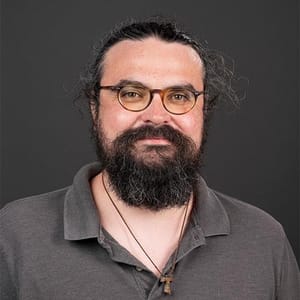
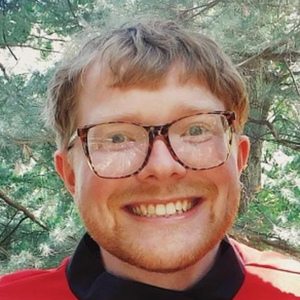
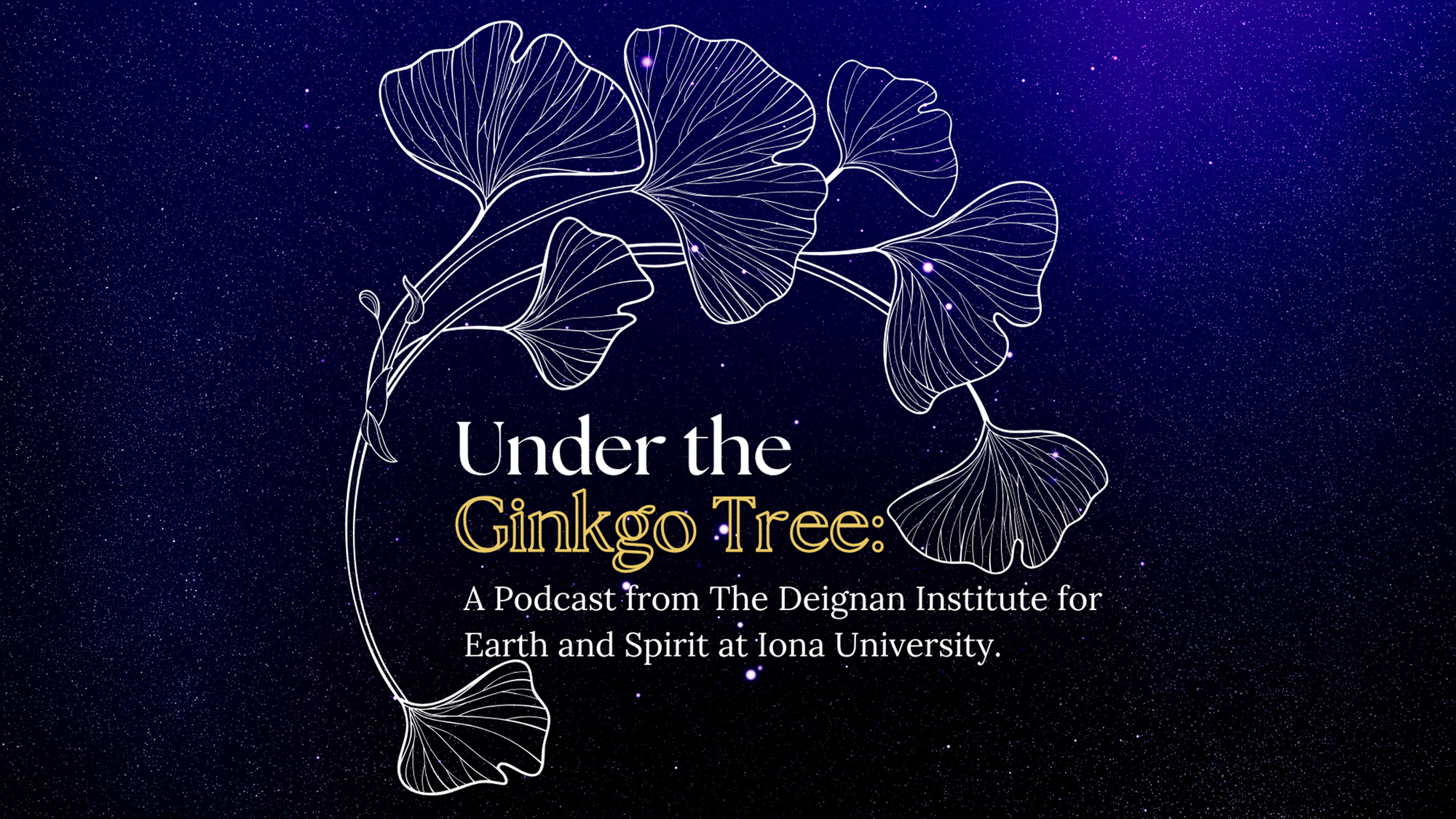
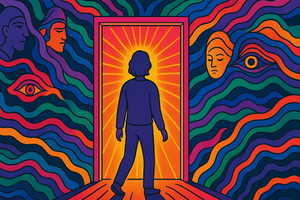

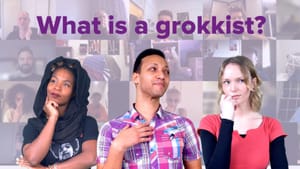


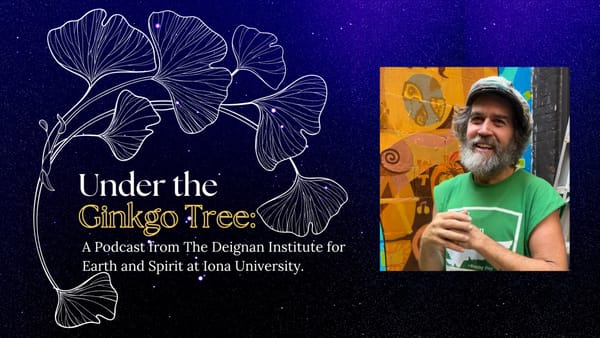
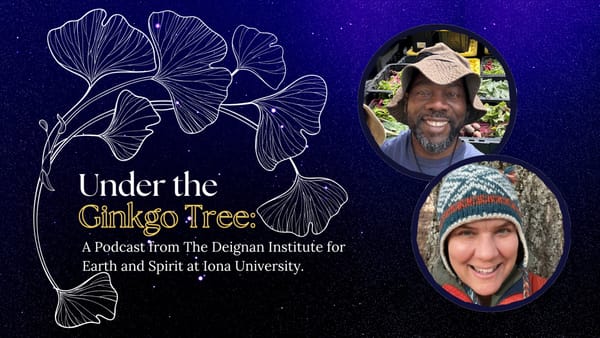
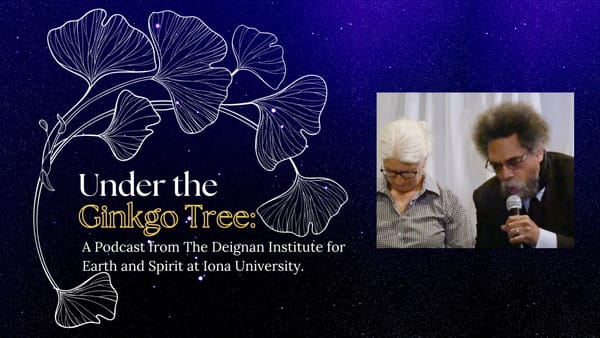
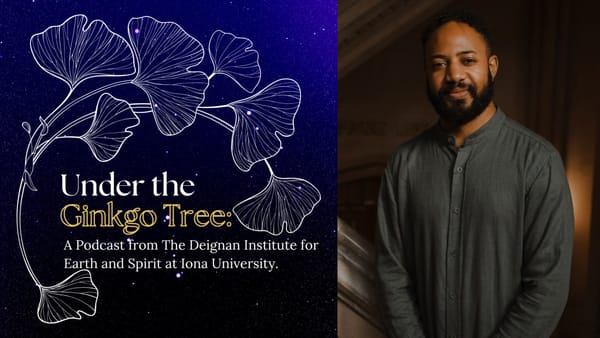
Member discussion